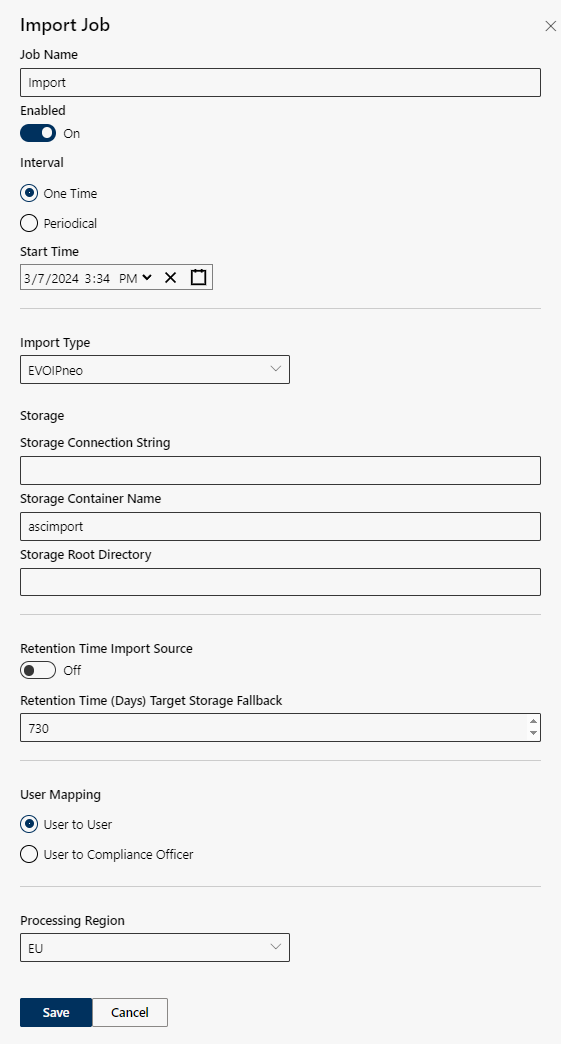Configure Import Job
Here, you can add a new import job or edit an existing import job. The column Group displays the job type.
Create a new import job:
- Click on the button
 Create Job
Create Job .
. - Click on the button
 Import Job.
Import Job. - In the field Job Name, enter an unambiguous, unique name for the import job.
Edit existing import job:
- Click on the icon
 .
. - The selected import job configuration is opened.
- Changing the name of the job is optional.
In the field Job Name, change the existing name to a new unambiguous, unique name for the export job. - The following window is displayed:

Configure import job
Option/Function | Description | ||
Enabled | Activates/deactivates the import job.
| ||
Interval | The import job is deactivated and is not executed.
| ||
Start Time | Specification of the date and time at which the import job is to be executed. | ||
Import Type | Defines the format of the import and the associated information. List of available import types, see Import Type | ||
Storage | Definition of the storage location and target directory for the import job. Relevant are: Storage connection string, the name of the storage folder (or target folder) and the target directory.
| ||
Retention time import source |
Import jobs are deleted from the import storage after the specified time, if they are older than the remaining retention time. | ||
Remaining Retention Time Import Source (in days) | Enter the number of days for which the imported data should be stored in the source directory of the import memory. The default value is 1 day. | ||
Retention Time (Days) Target Storage Fallback in Recording Insights | Specifies how long the imported recording remains available within Recording Insights if no transmission takes place. The default value is 730 days. | ||
User Mapping | The way in which imports are assigned to users.
| ||
Processing Region | Determines the geographical region from which the data is to be imported. The processing region should be the same as the continental region EU, USA, APAC. The following regions are available:
| ||
- Click on the button Save to save the settings.
Click on the button Cancel to discard the settings.
Archive created and deactivated import jobs
Only import jobs which have been created and deactivated can be archived or moved to the invisible area Historical Jobs.
Archive/Move import jobs, see Archive Import Jobs.
 On/Off to define the retention time of the import job in the source directory.
On/Off to define the retention time of the import job in the source directory. On: The Field Remaining TTL in import memory (in days) is displayed.
On: The Field Remaining TTL in import memory (in days) is displayed.